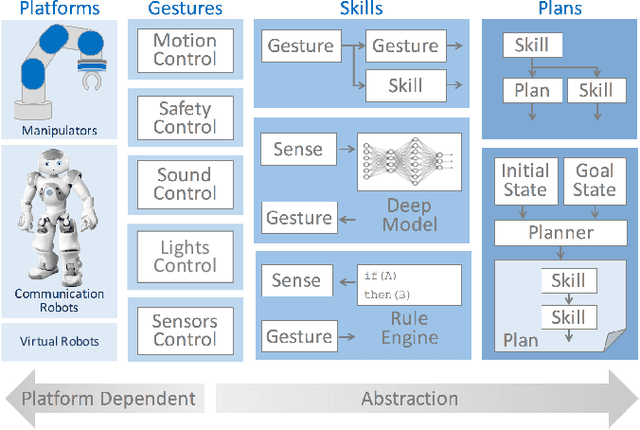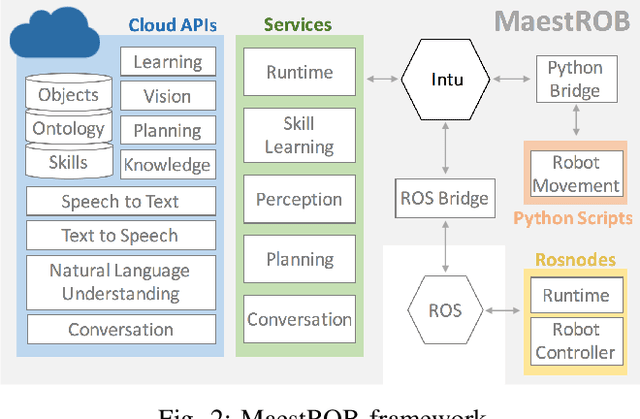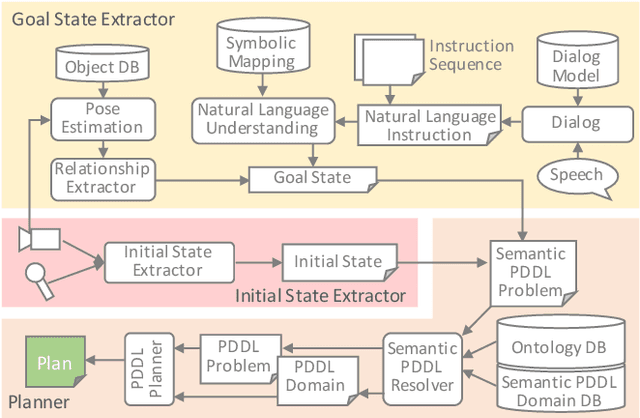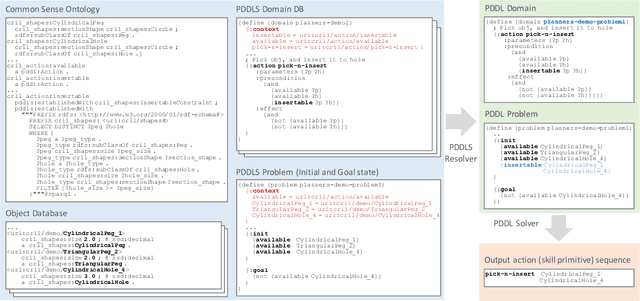Grady Booch
Thinking Fast and Slow in AI
Oct 12, 2020Abstract:This paper proposes a research direction to advance AI which draws inspiration from cognitive theories of human decision making. The premise is that if we gain insights about the causes of some human capabilities that are still lacking in AI (for instance, adaptability, generalizability, common sense, and causal reasoning), we may obtain similar capabilities in an AI system by embedding these causal components. We hope that the high-level description of our vision included in this paper, as well as the several research questions that we propose to consider, can stimulate the AI research community to define, try and evaluate new methodologies, frameworks, and evaluation metrics, in the spirit of achieving a better understanding of both human and machine intelligence.
MaestROB: A Robotics Framework for Integrated Orchestration of Low-Level Control and High-Level Reasoning
Jun 03, 2018



Abstract:This paper describes a framework called MaestROB. It is designed to make the robots perform complex tasks with high precision by simple high-level instructions given by natural language or demonstration. To realize this, it handles a hierarchical structure by using the knowledge stored in the forms of ontology and rules for bridging among different levels of instructions. Accordingly, the framework has multiple layers of processing components; perception and actuation control at the low level, symbolic planner and Watson APIs for cognitive capabilities and semantic understanding, and orchestration of these components by a new open source robot middleware called Project Intu at its core. We show how this framework can be used in a complex scenario where multiple actors (human, a communication robot, and an industrial robot) collaborate to perform a common industrial task. Human teaches an assembly task to Pepper (a humanoid robot from SoftBank Robotics) using natural language conversation and demonstration. Our framework helps Pepper perceive the human demonstration and generate a sequence of actions for UR5 (collaborative robot arm from Universal Robots), which ultimately performs the assembly (e.g. insertion) task.
 Add to Chrome
Add to Chrome Add to Firefox
Add to Firefox Add to Edge
Add to Edge